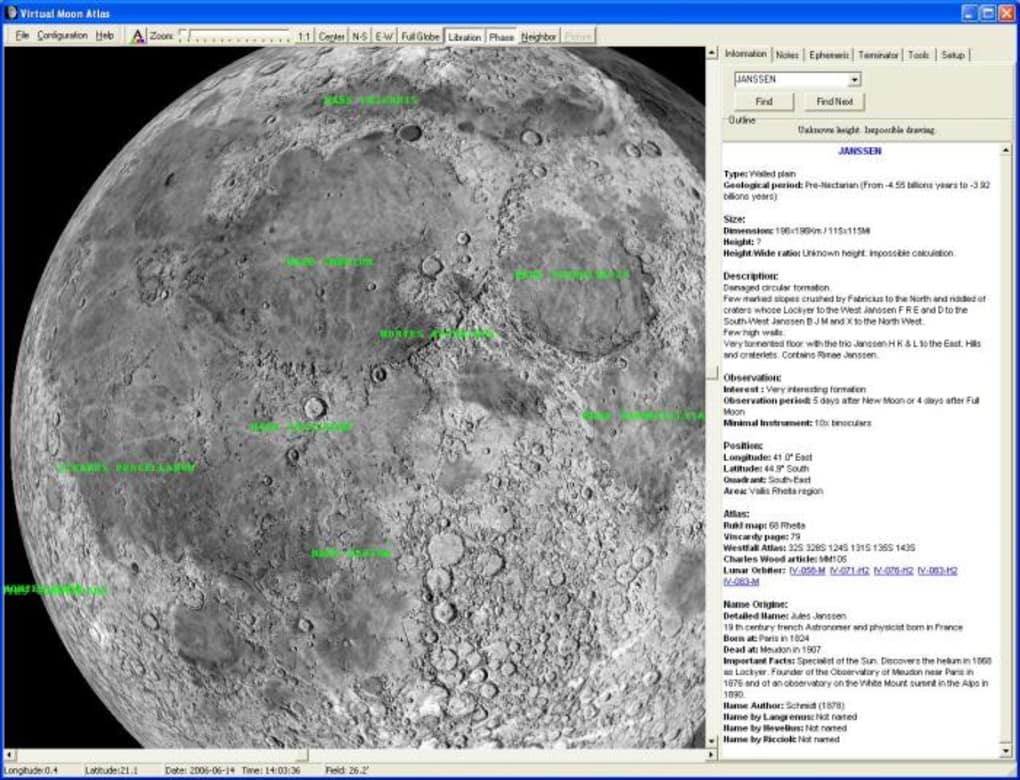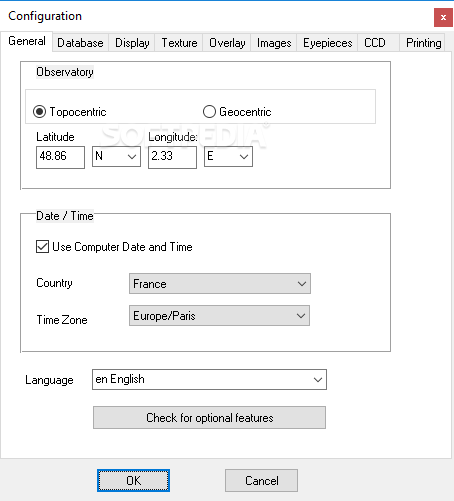

Rükl uses the traditional system of labeling satellite features by their letters only, placed on the side towards the parent feature after which it is named.Although this is a private publication, Rükl has generally striven to adhere to the IAU nomenclature as closely as possible.
#Interactive moon atlas series#
Newsletter, The American Astronomer.Description This series of careful maps of the Moon's nearside and libration zones, created by the former director of the Prague Planetarium, is widely regarded by amateur astronomers as the indispensable observing guide to lunar features. This observing award, but you will also get your own subscription to theĪstronomical League's newsletter, the REFLECTOR, as well as our own quarterly Member-at-Large, to receive certification for the Lunar Club.Īs a member of the AAAA, not only are you eligible to earn Through membership in an affiliated astronomical society or as a You MUST be a member of the Astronomical League, either Do NOT sendįor information on which lunar features to observe, read the Lunar Club Have completed an AL observing project, submit your observations directly Web page: Or send a check for $20 ($25 family) for each membership to: AAAA,

Which is a member society of the Astronomical League. E-Mail: may also join TheĪmerican Association of Amateur Astronomers, The Internet Astronomy Club , If you need to become a member of the Astronomical League as aīeucher, AL Executive Secretary, 11305 King Street, Overland Park, KSĦ6210-3421. You must be a member of the Astronomical League to You will also be added to the Astronomical League's list of Lunar Send your observations along with your name, address, phone number, andĬlub affiliation, either to your club's Awards Coordinator forĮ-mail: of your observations, your certificate and pin will beįorwarded either to you or your club's Awards Co-ordinator, whomever youĬhoose. To receive your Lunar Club Certificate and pin, simply More advanced moon atlas, we recommend Antonin Rukl's "Atlas of the Moon"Ĭo. To use with this program, we suggest, for those of you on a budget, "Moonįor $2.95. If you would like a good recommendation for a lunar map Observations on pages 2 and 3, and may be substituted for those Observing the 100 original features of the program, we have included 10 That is all there isįor those of you that still may have some trouble The columns on the right-hand side of pages 2 and 3. "CHK" column, and then list the date and time you observed the feature in Just list the instruments that you used at the top of pagesĢ and 3 of this flyer, check off the features as you observe them in the We have made it as simple as possible to log your Recommend that you tripod mount them for stability. Higher level, please try to get as many objects as you can with the The telescopic objects, you are on your own. If you have trouble with any of the binocular objects, Words, if you have trouble with any of the naked eye objects, you may jump Also, if you have problems with observing theįeatures at one level, you may go up to the next higher level. So, as you can see, this program does not requireĮxpensive equipment. The Lunar Club could be done with small apertures, we used 7x35 binocularsĪnd a 60mm refractor. These 100 features are broken down into three groups: 18 naked eye,Ĥ6 binocular, and 36 telescopic features. You need only be a member of the Astronomical League, either through anĪffiliated club or as a Member-at-Large, and observe 100 features on the To qualify for the AL's Lunar Club Certificate and pin, Finally, the Lunar Club wasĬreated as a project that can easily be done by schools and schoolĬhildren, especially those in the inner city. It is well balanced because it develops naked eye,īinocular, and telescopic observing skills. The older observer just getting into our hobby since no special observing Program is well suited for the young, inexperienced observer as well as Polluted areas to participate in an observing program of their own. The Lunar Club also allows amateurs in heavily light Month, and we all know that the sky is always clear when the moon is up. In other words, it gives us something to observe the rest of the Moon is down), this program gives them something to do when the moon is But even though deep sky observers search for dark skies (when the Most of us take for granted, and which deep sky observers have come to

Lunar Club introduces amateur astronomers to that object in the sky that Welcome to the Astronomical League's Lunar Club. Club - 100 features on the moon for naked eye, binoculars,


 0 kommentar(er)
0 kommentar(er)
